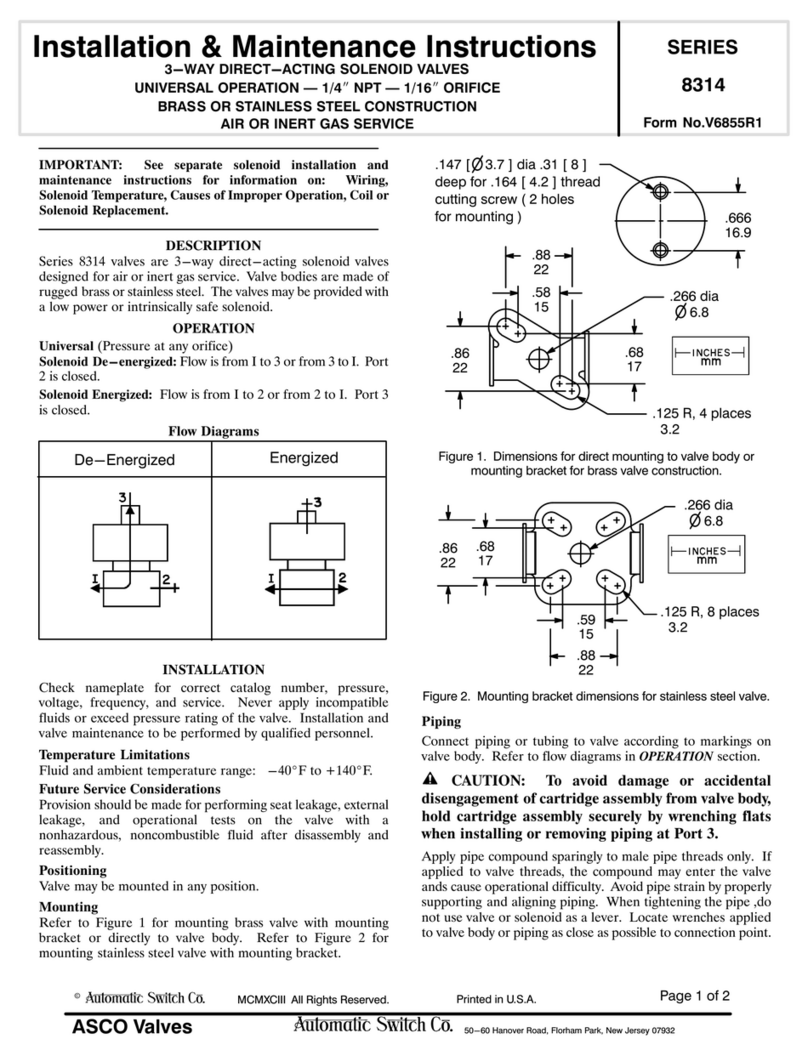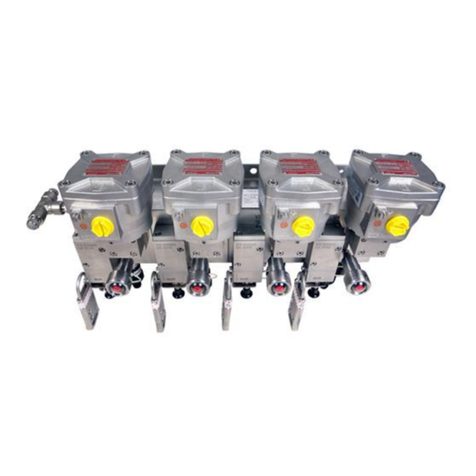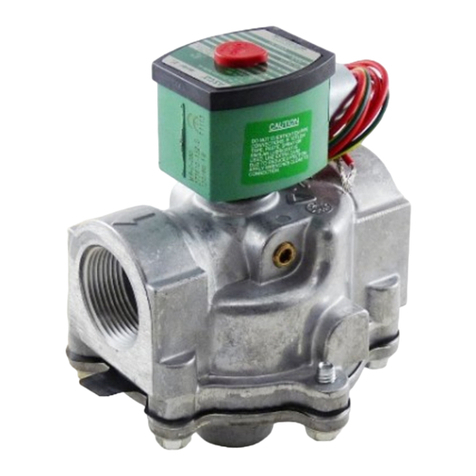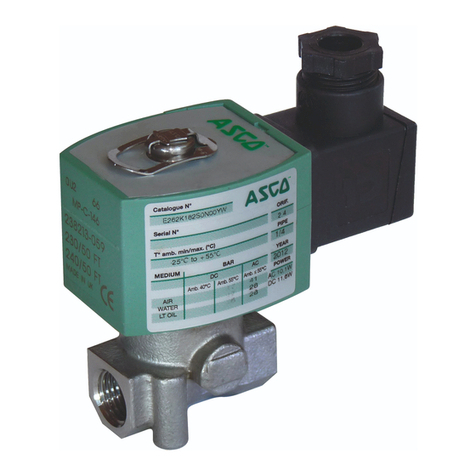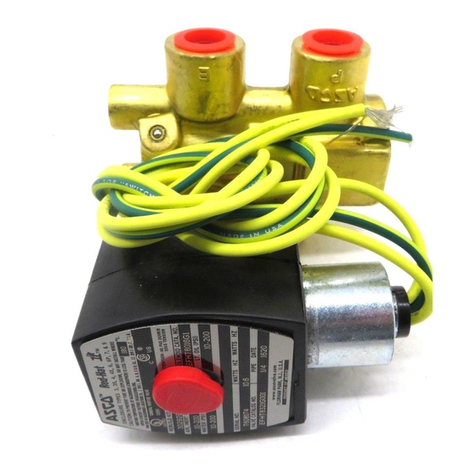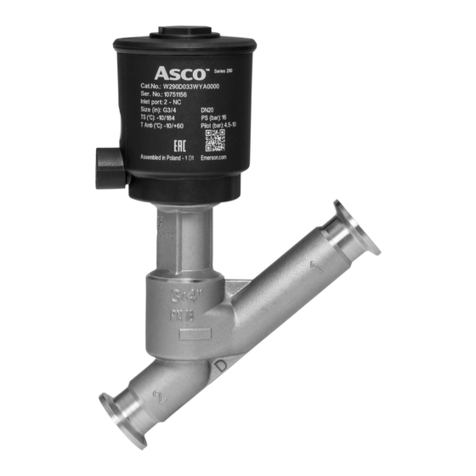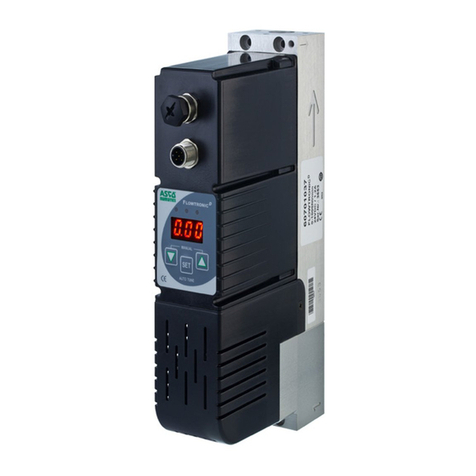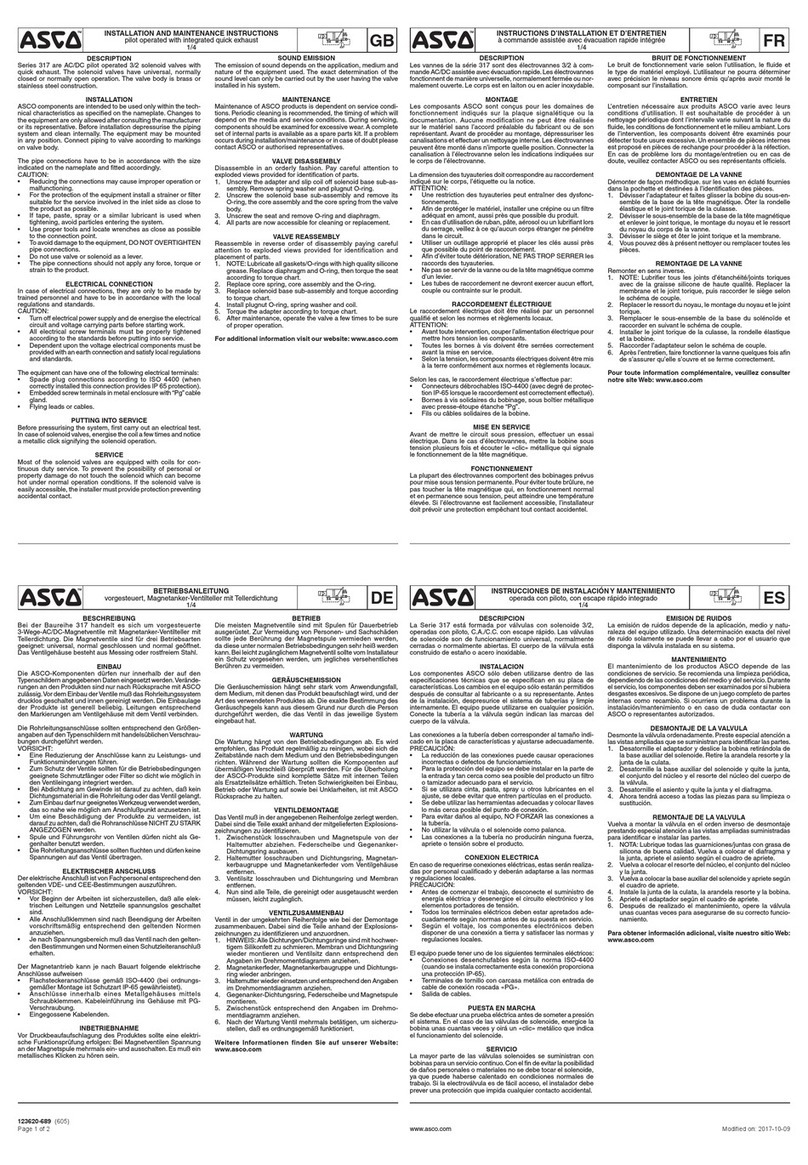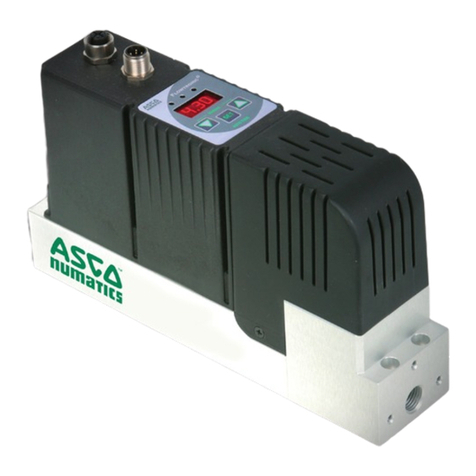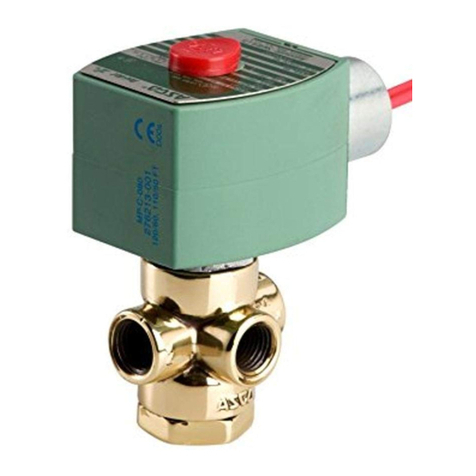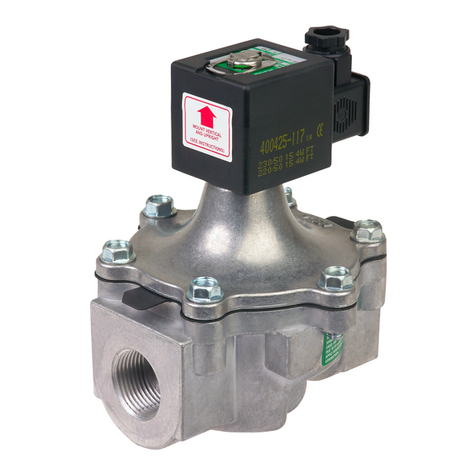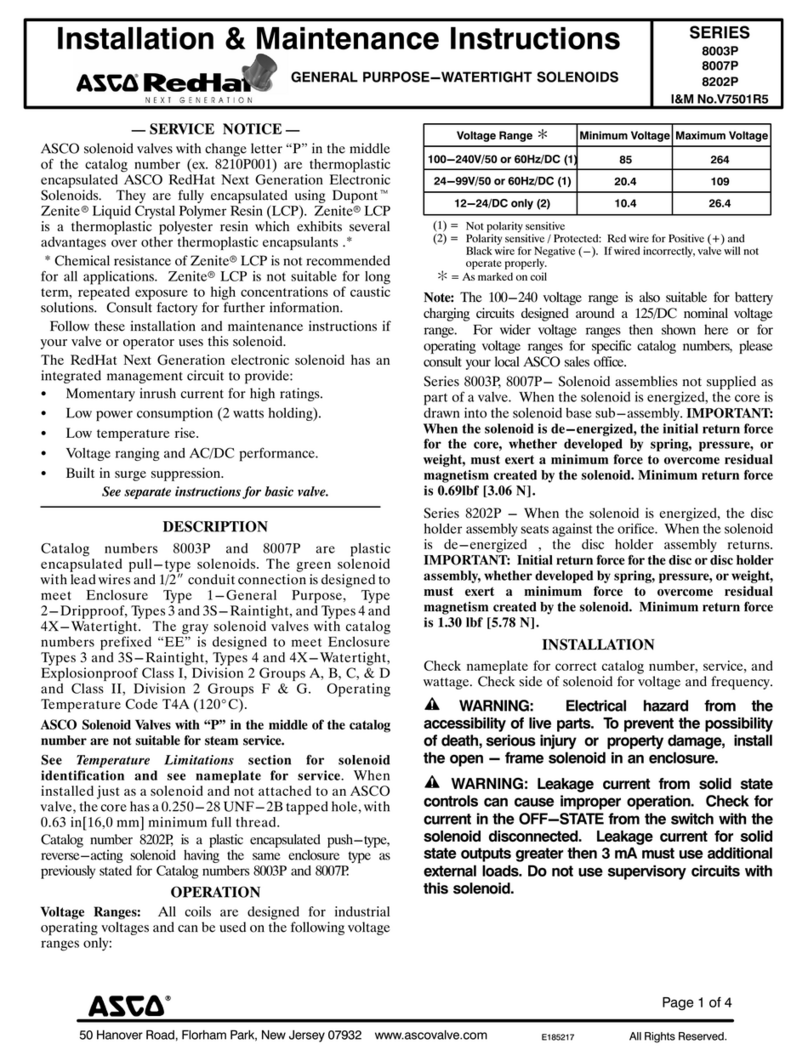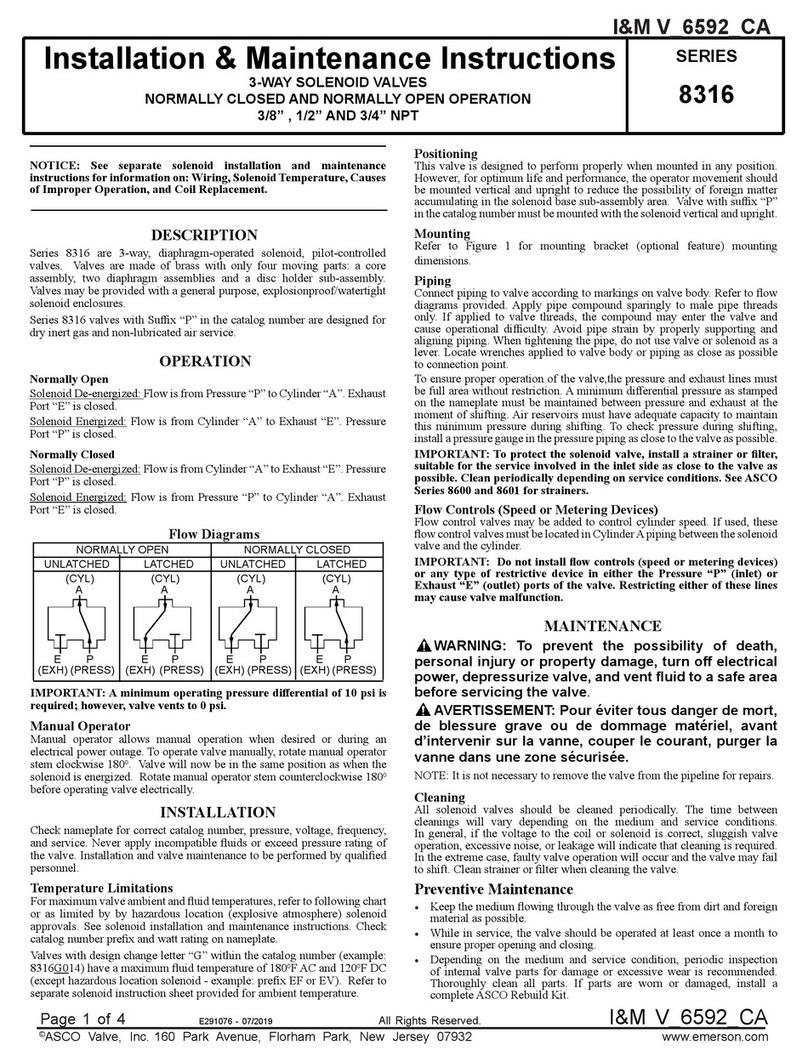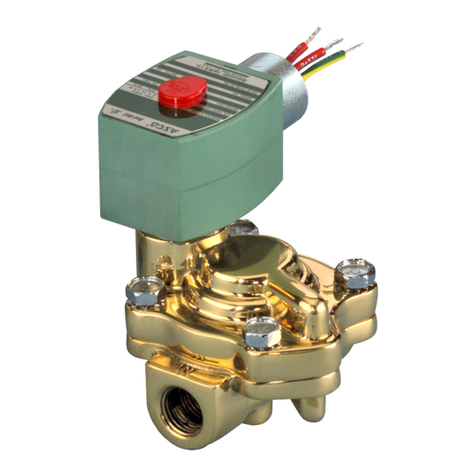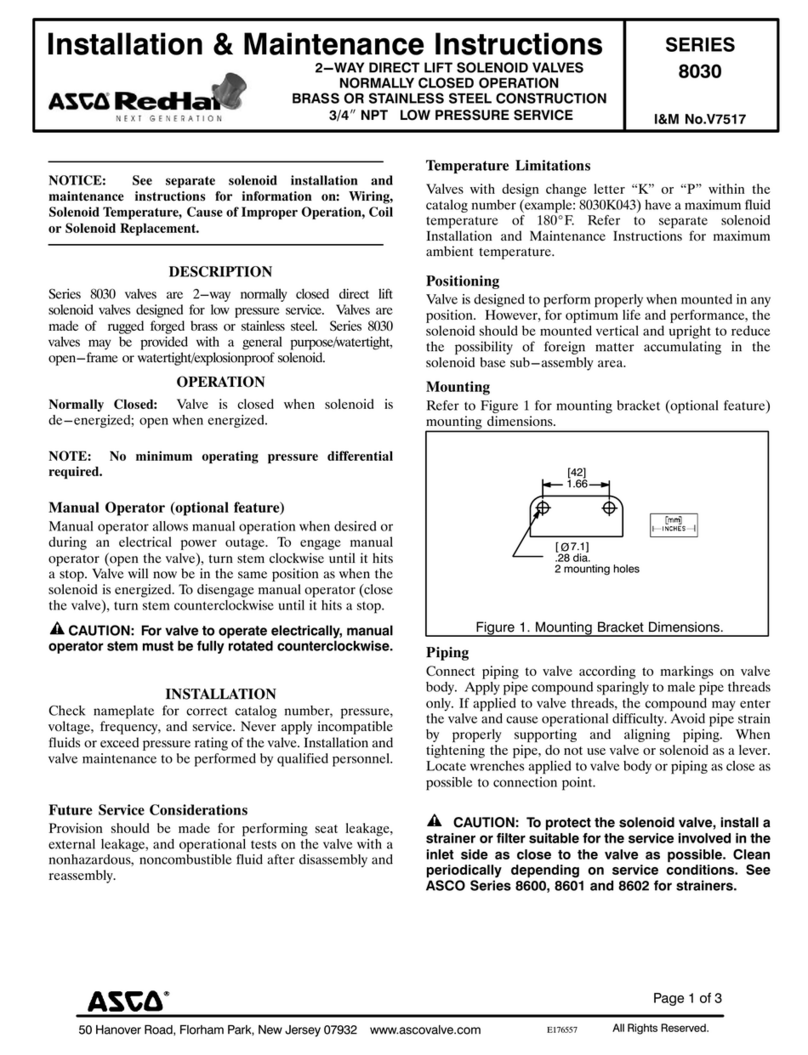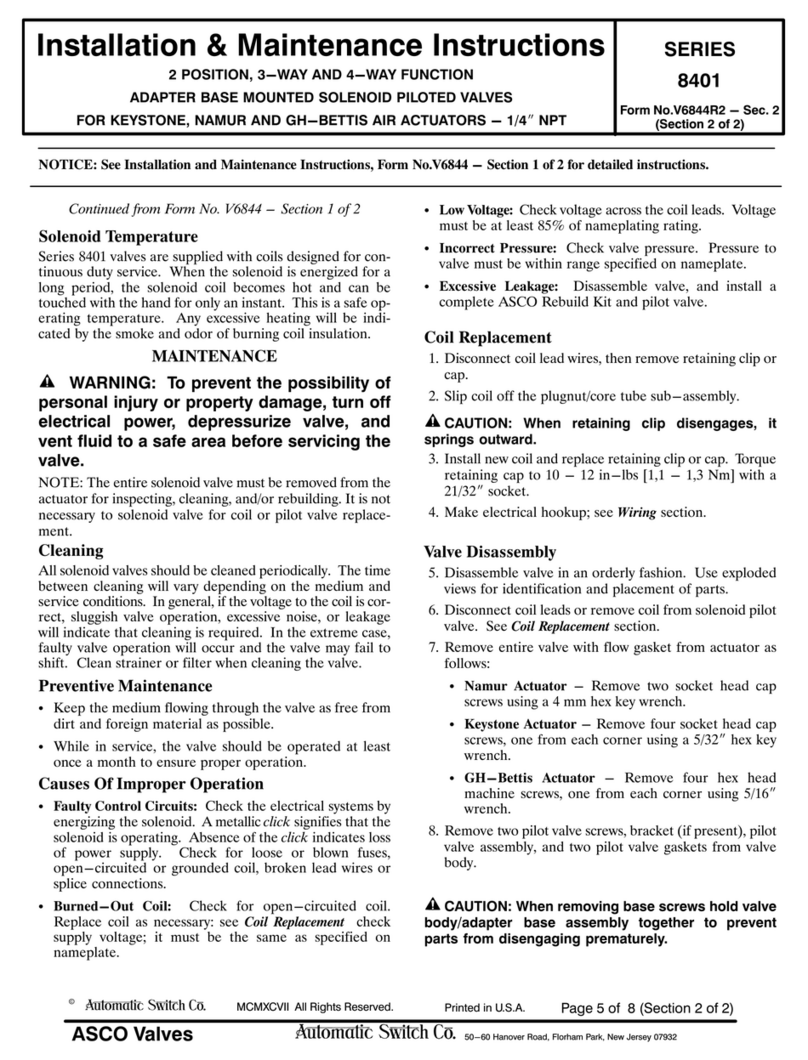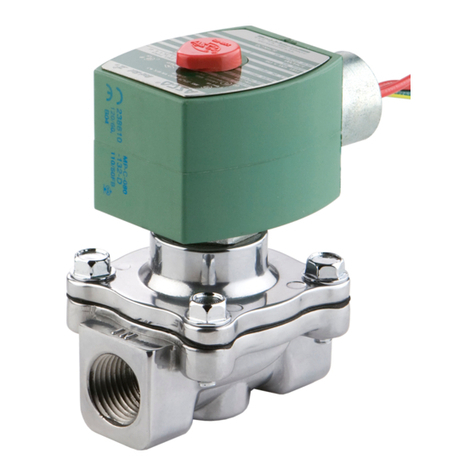
Page 4 of 8 (Section 1 of 2) Form No.V6928R3 - Sec. 1
50 anover Road, Florham Park, New Jersey 07932 www.ascovalve.com
Flow Controls (Speed or Metering Devices)
Flow control valves may e added to control cylinder speed. If
used, these flow control valves must e located in cylinder
piping etween the solenoid valve and the cylinder.
IMPORTANT: Do not install flow controls (speed or
metering de ices) or any type of restricti e de ice in the
pressure (inlet), exhaust or pilot exhaust (outlet) ports of
the al e. Restricting any of these lines may cause al e
malfunction.
Cyl.
Press.
Aux.
Pilot Exh.
Indicates location
of pressure gauge
Indicates location
of filter
Indicates location
of metering device
Main
Exh.
muffler
or piping
Solenoid
Figure 5. Piping diagram
For Internal Piloting Mode only: Full size
piping without restrictions must be used
on pressure and exhaust lines.
MAINTENANCE
W RNING: To prevent the possibility of death,
personal injury or property damage, turn off
electrical power, depressurize valve, and vent
fluid to a safe area before servicing the valve.
NOTE: It is not necessary to remove the valve from the pipeline
for repairs. However, piping or tu ing must e removed from
pilot exhaust on top of the solenoid if present. See Pi ing
section.
Cleaning
All solenoid valves should e cleaned periodically. The time
etween cleanings will vary depending on the medium and
service conditions. In general, if the voltage to the coil is
correct, sluggish valve operation, excessive noise or leakage will
indicate that cleaning is required. In the extreme case, faulty
valve operation will occur and the valve may fail to shift. Clean
filter when cleaning the valve.
Pre enti e Maintenance
SKeep the medium flowing through the valve as free from dirt
and foreign material as possi le.
SPeriodic exercise of the valve should e considered if
am ient or fluid conditions are such that corrosion,
elastomer degradation, fluid contamination uild up or
other conditions that could impede solenoid valve shifting
are possi le. In many cases, solenoid valves are periodically
exercised during normal system use or as part of routine
maintenance or surveillance activities and no additional
exercise is necessary. The actual frequency of exercise
necessary will depend on specific operating conditions. A
successful operating history is the est indication of a proper
interval etween exercise cycles.
SDepending on the medium and service conditions, periodic
inspection of internal valve parts for damage or excessive
wear is recommended. Thoroughly clean all parts. If parts
are worn or damaged, install a complete ASCO Re uild Kit.
Causes of Improper Operation
SIncorrect Pressure: Check valve pressure. Pressure to valve
must e within range specified on nameplate.
SExcessi e Leakage: Disassem le valve and clean all parts. If
parts are worn or damaged, install a complete ASCO
Re uild Kit.
Val e Disassembly
NOTICE: Basic al e constructions are identified by orifice
size and pipe size (NPT). Check al e nameplate for orifice and
pipe size. See Figure 7 for 5/16I orifice, 1/4I or 3/8I NPT;
Figure 8 for 5/8I orifice, 3/8I or 1/2I NPT. For Standard al e
solenoid parts see Figure 6 in addition to Figures 7 or 8. Figures
7 and 8 show Low Power and Intrinsically Safe solenoid parts.
Determine valve construction and proceed as follows:
1. Disassem le valve in an orderly fashion using exploded
views for identification and placement of parts.
2. Low Power & Intrinsically Safe - Using a suita le wrench
hold cartridge assem ly securely y wrenching flats. Then
unscrew muffler or piping from 1/8I NPT connection on
top of cartridge assem ly.
Standard Valves - Hold pipe adapter securely and
unscrew muffler or piping from 1/4I NPT connection on
top of solenoid ase su -assem ly.
3. Remove solenoid, see separate instructions.
4. Low Power & Intrinsically Safe - Unscrew cartridge
assem ly from valve ody. Then remove cartridge gasket
from valve ody and orifice gasket from recess in ase of
cartridge assem ly.
Standard Valves - Unscrew solenoid ase su -assem ly
from valve ody. Then remove solenoid ase gasket and
core assem ly with core spring and core guide. Core guide
present on AC construction only. Remove plugnut gasket
from groove in solenoid ase su -assem ly.
5. Remove cover screws (2), cover, and support containing
large and small flow gaskets from side of valve ody.
6. At exhaust end, remove onnet screws, lockwashers, valve
onnet, ody passage gasket, retaining ring, diaphragm
assem ly, diaphragm support (see note elow) and ody
gasket from valve ody.
NOTE: Retaining ring and diaphragm support are only present
on 5/8I orifice valve constructions. However, they are not resent
on all 5/8I orifice valve constructions.
7. At opposite end remove onnet screws, lockwashers, end
cap, disc spring, ody gasket, disc assem ly and valve stem.
8. All parts are now accessi le for cleaning or replacement.
If parts are worn or damaged, install a complete ASCO
Re uild Kit.
continued on Form No. V6928R3 - Section 2 of 2
